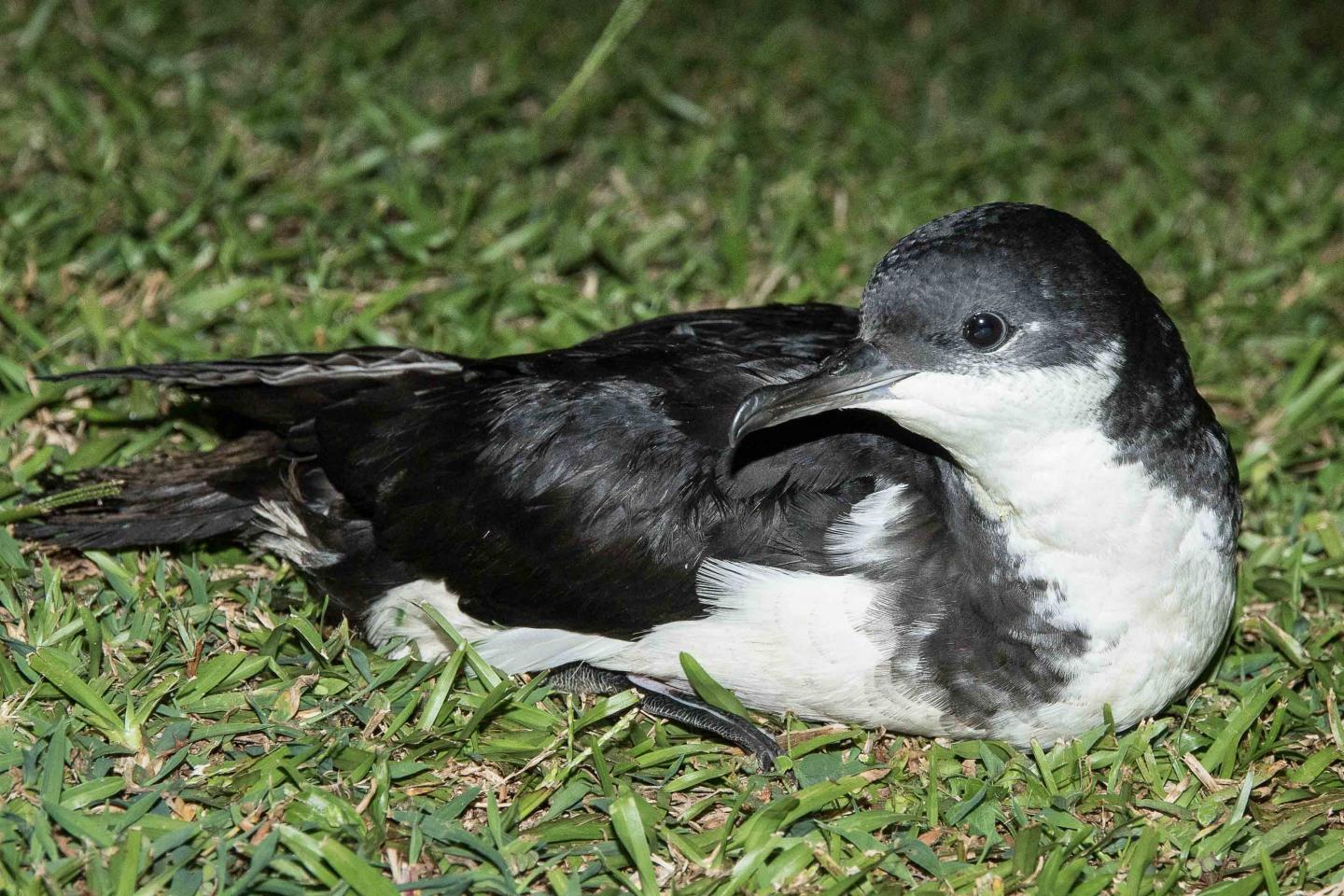
A Newell’s Shearwater ashore, photograph by Lindsay Young
André Raine and colleagues (Archipelago Research and Conservation, Hanapepe, Kaua‘i, Hawaii, USA) have published in the journal Bird Conservation International on breeding phenology of the Critically Endangered Newell’s Shearwater Puffinus newelli.
The paper’s abstract follows:
“The ‘a‘o, or Newell’s Shearwater Puffinus newelli, is an endangered shearwater species endemic to the Hawaiian Islands, with 90% of the world population found on Kaua‘i. Understanding the breeding phenology of the species is vital for identifying key periods for colony management actions and the timing and exposure frequency to infrastructure threats such as powerline collisions and light attraction. We used a combination of direct burrow monitoring and remote cameras at multiple colonies between 2012 and 2019 for a detailed assessment of the breeding phenology for this species. Breeding adults started arriving at the burrow in mid-April, some (but not all) underwent a two-week exodus in May and returned at the end of May to commence incubation. Incubation continued until mid-July. The chick-rearing period ran until the end of September. Fledging peaked in October with the last birds fledging towards the middle of November. Breeding was not synchronised, with a 59-day gap between the first and last fledging birds. The importance of this information to management actions is discussed, particularly in terms of directing management actions to key periods of vulnerability to introduced predators (such as peak incubation, chick emergence, and exercising prior to fledging), the precise timing of fledgling fallout related to light attraction, and directing colony-monitoring actions and translocation projects. We also consider the utility of the data in assessing species composition of powerline collisions and collision risk. Future work using acoustic monitoring is recommended for assessing the phenology of non-breeders and prospectors at colonies.”
Reference:
Raine, A.F., Driskill, S., Rothe, J. & Travers, M.S. 2022. Evaluating the breeding phenology of the endangered ‘a‘o (Newell’s Shearwater Puffinus newelli) on Kaua‘i to better focus conservation actions and management decisions. Bird Conservation International doi.org/10.1017/S0959270922000387.
John Cooper, ACAP News Correspondent, 08 November 2022

 Français
Français  English
English  Español
Español